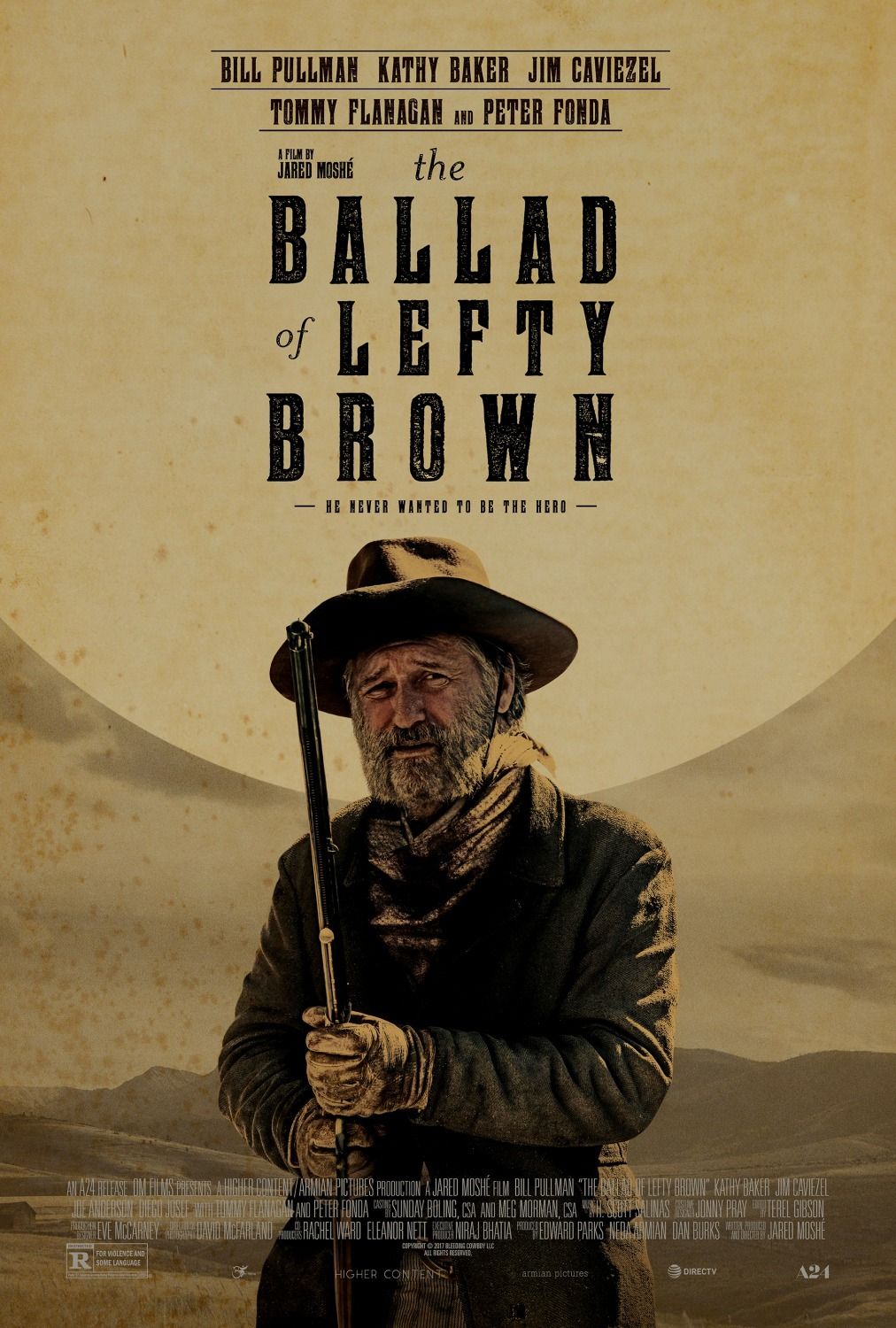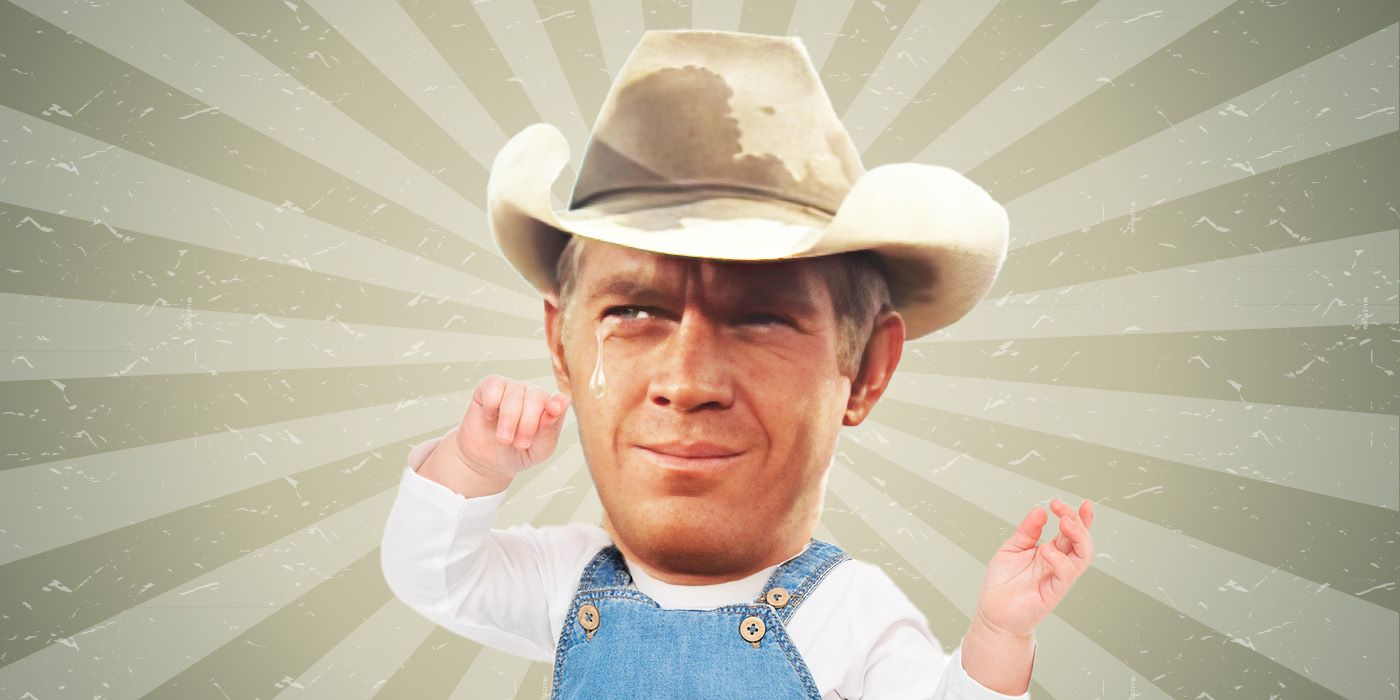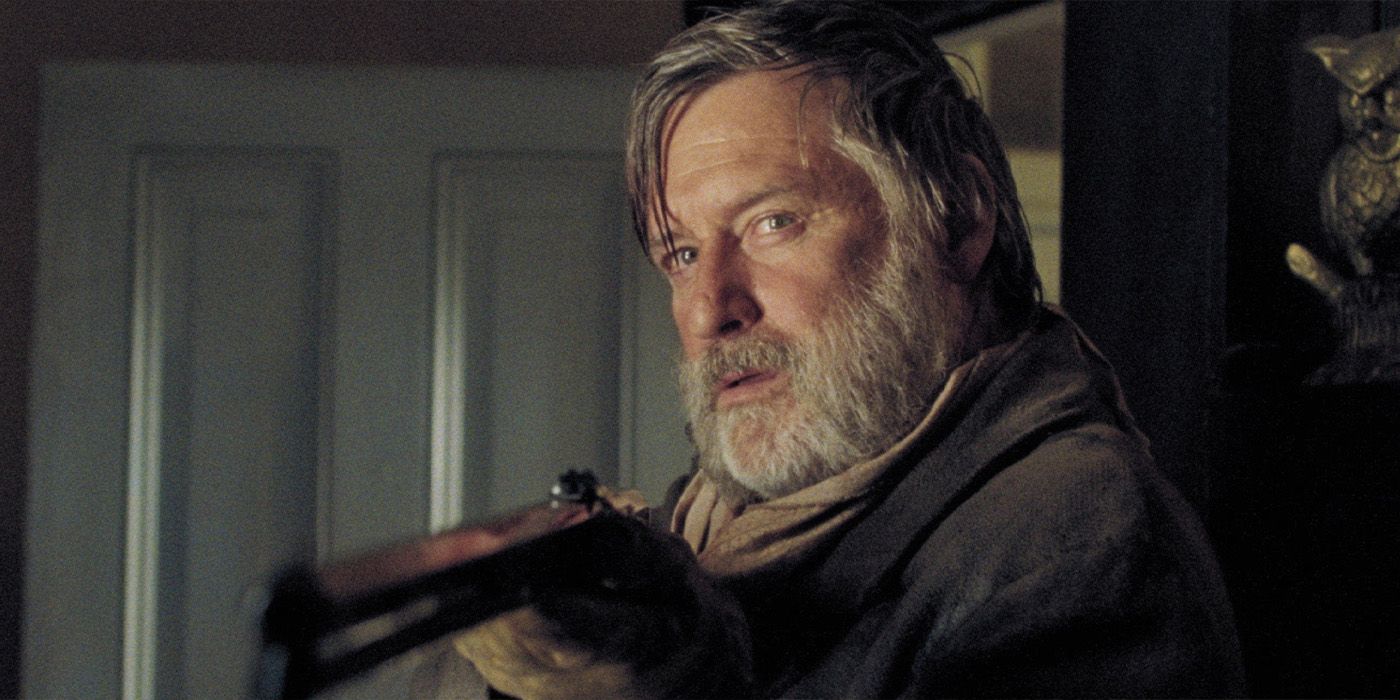Don’t mess with Bill Pullman.
The Big Picture
- Bill Pullman shines as Lefty Brown, a character who transforms from a plucky sidekick to a notable hero.
- The film’s ending stays true to Western tradition, with Lefty making a morally ambiguous decision that solidifies his transformation into a Western hero.
- Pullman’s raw and nuanced performance brings depth to Lefty Brown, making him a relatable and complex character that you can’t help but root for.
Bill Pullman has quite an eclectic filmography. While his most famous role is undoubtedly President Whitmore in Independence Day (and its lackluster sequel), Pullman’s impressive career has also included movies like Spaceballs, Casper, While You Were Sleeping, Sleepless in Seattle, and even The Equalizer. On only a few occasions has Pullman ever tackled a Western, that is, until he took center stage in the 2017 A24 picture, The Ballad of Lefty Brown. If you haven’t seen this flick, you’d best add it to your queue, because Lefty Brown takes your standard Western sidekick and instead propels him into the leading role. And boy, is it a fun ride.

The Ballad of Lefty Brown
A thrilling and action-packed Western, The Ballad of Lefty Brown is a story about loyalty, friendship, and the relentless pursuit of justice.
- Release Date
- December 15, 2017
- Director
- Jared Moshe
- Cast
- Bill Pullman , Peter Fonda , Stephen Alan Seder , Kathy Baker , Joseph Anderson , Tyson Gerhardt
- Runtime
- 111 minutes
- Main Genre
- Western
- Writers
- Jared Moshe
- Studio
- A24 Films
- Tagline
- He never wanted to be the hero
‘The Ballad of Lefty Brown’ Takes a Classic Western Story in a New Direction
Most Westerns highlight some sort of heroic protagonist who sets out to defeat the villains in their wake. This person is generally strong, independent, an expert shot, and not someone to be trifled with. John Wayne and Clint Eastwood have traditionally represented these mythic archetypes, though others such as Gary Cooper, James Stewart, Kevin Costner, and even Gregory Peck have put their own spin on the classic Western hero. Often, but not always, these stars have plucky sidekicks of their own. Sometimes they’re humorous or incompetent, other times they’re stoic and invaluable (such as Jay Silverheels of The Lone Ranger fame). Bill Pullman’s Lefty Brown fits mostly into the former category when the picture starts, but by the end, we see a whole new side of this aged up-and-comer.
It’s not every day that a movie kills Peter Fonda in the first 15–20 minutes, but The Ballad of Lefty Brown wastes no time putting a bullet in lawman Ed Johnson’s thick skull in favor of the bigger picture. Though Ed clearly puts Lefty in charge of his family ranch while he and his wife Laura (Kathy Baker) are set to travel east to Washington D.C. (Ed is about to become a Senator before his death), the film decides instead to rid Lefty of his 40-plus year-long companion right out of the gate, as well as all his boring ranching duties with him. After first establishing that Ed Johnson is this film’s trademark Western hero (his heroic intro speaks for itself), Lefty is left to pick up all the pieces and track down his best friend’s killer. Only unlike your usual gunslinging Western protagonist, Lefty is the type of incompetent man you wouldn’t want doing much of anything for you, but that’s what makes The Ballad of Lefty Brown so unpredictable and exciting.
Sure, some of the usual Western tropes are established early on, such as Lefty stumbling upon a sidekick of his own in Jeremiah Perkins (Diego Josef), but the movie soon deviates into something much more interesting: a character study of how a misunderstood sidekick can grow into a notable hero of his own. Of course, the ride itself is filled with plenty of danger and uncertainty, and it takes its sweet time to get there. While John Wayne and Clint Eastwood rarely lose a gunfight, Lefty struggles through his fair share (he’s got a limp and poor aim, after all), and he’s often tied up and humiliated by friends, foes, and former allies alike. Lefty Brown doesn’t have a badge, a posse, or the notoriety of his infamous friends who appear on the pages of dime novels, but he has an enduring loyalty that makes up for the rest, played to perfection by Bill Pullman himself.
Bill Pullman Steals the Show in ‘The Ballad of Lefty Brown’
If there’s one reason why The Ballad of Lefty Brown is such a great time, it would be overwhelmingly because of Bill Pullman. To say that Pullman commits here is to state the obvious, but what might be less so is that Lefty Brown is the sort of character the actor doesn’t usually portray. If you’re expecting to see a well-put-together man on a mission like in Independence Day, you’ll be sorely disappointed, though not for long. Pullman brings a rawness to this role that makes Lefty feel deeply human, almost like he’s your longtime friend who is always down on their luck. Always falling behind and never quite front-and-center, Lefty Brown makes its titular character feel seen and heard just like we all wish to be. In this case, it gives someone who could have easily been a supporting character the time of day.

Steve McQueen Was a Big Baby While Filming ‘The Magnificent Seven’
The Oscar-nominated Hollywood icon really wanted more attention.
After the young gunfighter Jeremiah is shot by assassin Frank Baines (Joe Anderson), Lefty is forced to clean the young man’s wounds. Jeremiah, who had been raving about his favorite Old West heroes such as Ed and their companion Tom Harrah (Tommy Flanagan) the entire picture thus far, stops Lefty in the middle of telling an “Ed Johnson story” and asks instead about our newfound hero. Pullman’s character hadn’t been included in the dime novelizations of Ed, Tom, and Governor James Bierce’s (Jim Caviezel) youthful adventures, leaving Jeremiah generally uninterested in his life, mission, and basic opinions this whole time. But seeing Lefty in action, namely his unwavering commitment and his compassion, the young gunslinger grows to care more deeply about Lefty Brown than any of the others. For the first time in Lefty’s life, the aged cowboy recounts a ballad of his own, and the film is much better for it.
What could easily be a throwaway moment is played on powerfully by Pullman, whose character struggles to take the stage but eventually does so with humility. Every time Lefty has “played hero,” it’s gone poorly for him. At one point, upon returning to the Johnson ranch, Lefty is nearly strung up after Governor Bierce accuses him of killing Ed. He isn’t given a fair trial, nor does anyone (including Ed’s widow, Laura) come to his defense. Instead, everyone is content to believe that Lefty was simply through with being the forgotten Tonto to Ed’s notable Lone Ranger, and killed the man after all those years of riding together. With Ed dead and gone, not one person believes in Lefty Brown, and that’s part of why this underdog story is so engaging. Pullman plays the dazed and confused cowboy perfectly here, but even in the chaos, Lefty remains single-minded, on his mission to avenge his friend and save another in the wounded Jeremiah.
The A24 Western’s Dark Ending Goes Back to Western Tradition
Perhaps the reason The Ballad of Lefty Brown lands so well is its ending. After Lefty first uncovers and later outs Governor “Jimmy” Bierce as the man behind Ed’s death (due to their differing opinions on the railroad’s inevitable journey through Montana), he soon captures his former friend with the hope of seeing him stand trial. Only, that’s not how this Western ends. At the beginning of the film, Ed and Lefty capture a criminal and hang him without due process (well, let’s be honest, it was mostly Ed). Though Lefty struggles with the legality and morality of the act, Ed reassures him that it’s the only way that justice will surely be done. So when Laura Johnson offers the same demand that her husband did, Lefty struggles all the same. This is his story after all, but this is where The Ballad of Lefty Brown chooses to hold to the myth of the American West above all else, prompting our newly vindicated hero to take “Ed’s way” out.
In deciding to hang Bierce himself, Lefty takes on the guilt and the legal consequences of said actions after nearly the entire town of Bannack watches him kick the Governor’s bucket. Sadly, this means Lefty must leave town. This ending is a curious one that speaks volumes concerning Lefty’s generally moral character. On one hand, it reveals a man who will never fully escape Ed Johnson’s shadow. His friend may be dead, and that death may be avenged, but Lefty will live with this action for the rest of his life. More than that, in succumbing to “Ed’s way” of doing things, Lefty chooses to be more like Ed than himself. The entire film, Lefty seeks to bring the killer to justice. Be it Frank, the man who pulled the trigger, or Bierce, the man who signed the order, our strange hero fights to see that true and lawful justice is done. Had Laura not been there to hear Bierce’s confession herself, Lefty would’ve made sure that he went right to jail until he could be tried. This is the type of man that Lefty has been up until this point.
But Lefty’s choice to hang his old friend and leave town as a lone rider means something else too. Like the Western icons of old, The Ballad of Lefty Brown ends with Pullman’s character riding off like all the usual suspects do, signifying that Lefty himself has transcended from obscurity to legend. Lefty, too, is now a Western hero, no longer the sidekick to one Ed Johnson, and certainly not a second-stringer protagonist. No, the picture lives up to its name by pushing our hero into the very role he always cautiously avoided. Lefty may have been willing to let Ed make all the hard choices and take the even harder shots beforehand, but without him, he must fend for himself. In choosing the path of the traditional Western hero, Lefty ends this story in the only way a true Western can really end (barring his death, of course). This movie isn’t called The Ballad of Lefty Brown for nothing, and in the end, he’s the one we’re writing about here. Turns out, the sidekick can become the hero after all, though it requires a much greater sacrifice.
The Ballad of Lefty Brown is available to watch on Max in the U.S.
This article was originally published on collider.com



